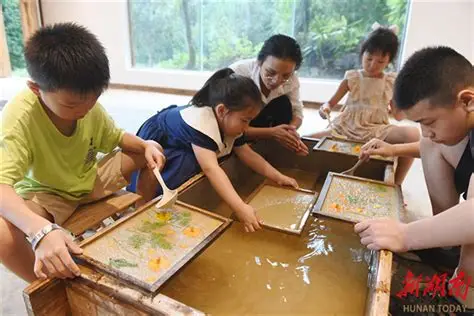In an age where travelers increasingly seek authentic, immersive experiences, traditional arts and crafts have emerged as powerful tools to enrich tourism offerings. These cultural expressions are not only valuable for preserving heritage but also for creating memorable, marketable experiences that attract both domestic and international visitors. By strategically integrating traditional arts and crafts into the tourism industry, communities can stimulate economic growth, promote cultural identity, and foster sustainable development.
1. Creating Authentic Cultural Experiences
Modern tourists, especially those interested in cultural and heritage tourism, are looking for more than just sightseeing they want to engage with the soul of a destination. Traditional arts and crafts offer a direct window into the values, history, and lifestyle of local people. From pottery and woodcarving to weaving, beadwork, and painting, these crafts allow visitors to witness cultural practices that are often centuries old.
Offering interactive workshops, guided craft tours, and live demonstrations allows tourists to participate in the creative process, turning a passive visit into an active, memorable experience.
2. Developing Craft Villages and Cultural Centers
Establishing craft villages, artisan markets, or cultural centers can serve as focal points for tourism. These spaces not only provide artisans with a platform to showcase and sell their work but also create designated destinations that draw consistent tourist traffic.
For example, well known artisan hubs in places like Marrakech (Morocco) or Bali (Indonesia) have become central to the tourism economy. Similar models can be replicated in regions rich in traditional craftsmanship, turning local knowledge into a valuable tourism asset.
3. Adding Value Through Cultural Storytelling
Each handcrafted item often carries a deep cultural significance a story of origin, technique, or symbolism. By training artisans or tour guides to communicate these stories, tourism experiences become more enriching and emotionally resonant.
Storytelling transforms simple objects into cultural artifacts, making them more appealing to tourists who value meaning and heritage in their purchases. This not only increases sales but also fosters appreciation for cultural traditions.
4. Encouraging Sustainable and Community-Based Tourism
Integrating traditional arts and crafts into tourism promotes inclusive, sustainable development. Unlike mass tourism, which often funnels profits to large corporations, craft based tourism directly benefits local communities and small-scale artisans.
By supporting artisans many of whom are women or members of indigenous groups tourism helps preserve endangered traditions while creating job opportunities and empowering marginalized communities.
Sustainable models, such as fair-trade certification, eco-friendly packaging, and locally sourced materials, can further enhance the appeal of these products to environmentally conscious travelers.
5. Enhancing the Tourist Shopping Experience
Souvenir shopping is a common part of the tourist journey. Offering locally made, culturally significant items adds value to this experience. Instead of generic imports, visitors are more likely to buy handwoven textiles, hand-painted ceramics, or locally crafted jewelry that reminds them of their trip.
To capitalize on this, tourism boards and businesses can:
- Partner with local artisans to stock authentic products in hotel gift shops, airports, and tourist centers.
- Offer certification of authenticity to build trust and value.
- Promote seasonal craft fairs and art festivals that attract both tourists and collectors.
6. Leveraging Digital Platforms and E-commerce
While the physical experience of engaging with crafts is important, the digital landscape offers powerful ways to extend the reach of traditional artisans. Virtual craft tours, online classes, and e-commerce platforms can keep tourists engaged even after they leave a destination.
Social media storytelling, influencer collaborations, and online galleries allow tourists to continue supporting artisans from afar, creating long-term cultural and economic impact.
7. Collaborating with the Hospitality Sector
Hotels, resorts, and tour operators can play a key role in promoting local crafts by:
- Decorating with local artworks and crafts.
- Offering in house workshops led by local artisans.
- Including visits to craft centers in tour packages.
- Hosting craft exhibitions and live demonstrations for guests.
These initiatives create immersive cultural experiences while also promoting local talent.
Conclusion
Traditional arts and crafts are more than just souvenirs they are cultural treasures that can transform the tourism landscape. When thoughtfully integrated into tourism strategies, they create authentic experiences, empower local communities, and preserve cultural heritage. As travelers increasingly seek deeper connections with the places they visit, investing in arts and crafts is not just a cultural choice, but a smart, sustainable tourism strategy.






